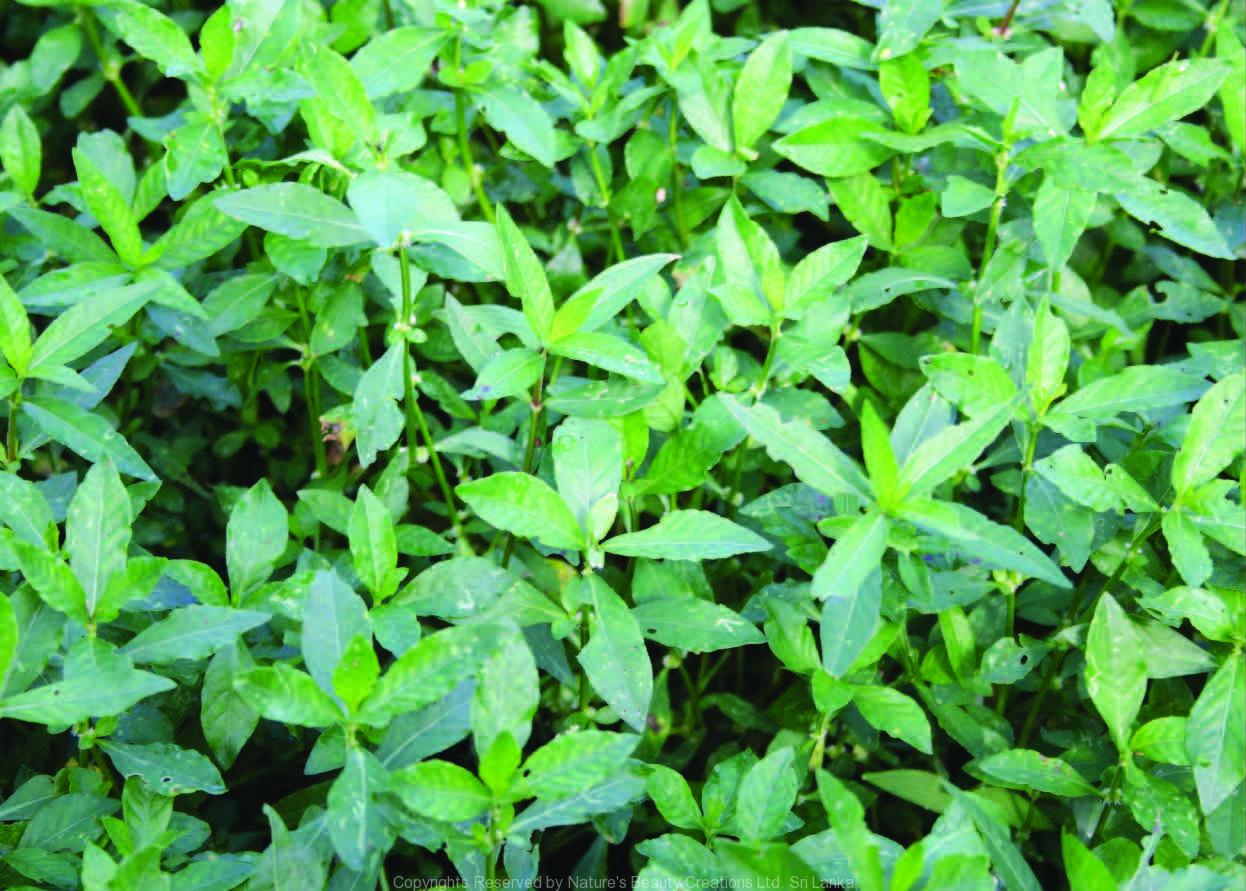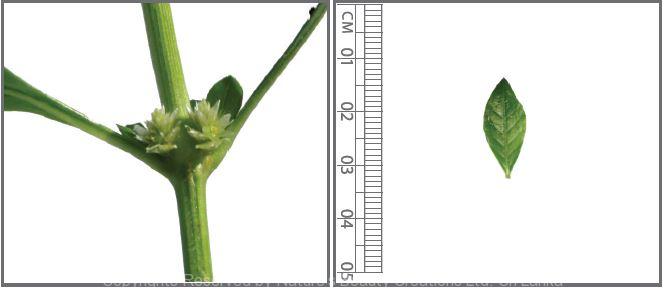

Traditional Knowledge
Useful plant parts :
Leaf and stem
Uses in traditional medicine :
- Leaves and stem are edible, said to improve eye sight and promote healthy hair
- Increase the flow of breast milk
- Acts as a cholagogue and laxative
- Remedy for snake bites
- A diuretic and diluent, hence used to treat chronic pyelitis, cystitis, gonorrhoea and stranguary
Scientific Research
Chemical constituents:
lonone derivatives from leaves
Bioactivity :
Whole plant: hepatoprotective; chloroform extract of leaves: antimicrobial, wound healing; alcohol extract of plant: antiallergic, antioxidative
Clinical:
Note :
Leaves are used as a vegetable
References : Boah, H. et al., (2011), In-vitro antioxident and free radical scavenging activity of Alternanthera sessilis, International J Pharmaceutical Science and Research, 2(6), 1502-1506. Jalalpure, S. S. et al., (2008), Antimicrobial and wound healing activities of leaves of Alternanthera sessilis Linn, International Journal of Green Pharmacy, 2(3), 141-144. Lin, S. C. et al., (1994), Hepatoprotective effects of Taiwan folk medicine: Alternanthera sessilison liver damage induced by various hepatotoxins, Phytotherapy Research, 8(7), 391–398. Ragasa, C. Y. et al., (2002), Ionone derivatives from Alternanthera sessilis., Journal of Asian Natural Products Research, 4(2), 109-15. Rayees, S. et al., (2013), Ethanolic Extract of Alternanthera sessilis (AS-1) Inhibits IgE-mediated Allergic Response in RBL-2H3 Cells, Immunol Invest.
Copyrights Reserved By
Natures Beauty Creations



